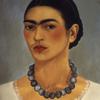Friends of Florence restores six Renaissance masterpieces featured in major exhibition at Palazzo Strozzi
- WASHINGTON, DC
- /
- September 21, 2017
SIX RENAISSANCE MASTERPIECES RESTORED THANKS TO FRIENDS OF FLORENCE
FEATURED IN MAJOR EXHIBITION AT PALAZZO STROZZI, FLORENCE
The Cinquecento in Florence from Michelangelo and Pontormo to Giambologna
September 21, 2017–January 21, 2018
Washington, DC…Friends of Florence announced today that six seminal artworks from the Italian Renaissance—meticulously restored with their support—will be featured in a major exhibition at the Palazzo Strozzi in Florence, Italy: The Cinquecento in Florence from Michelangelo and Pontormo to Giambologna, on view September 21, 2017–January 21, 2018. Comprising 70 paintings and sculptures, the exhibition was organized to illuminate what Giorgio Vasari (1511-1574) called “the modern manner” juxtaposed with the dictates of the Counter-Reformation. The influence of Francesco I de' Medici (1541-87), one of the greatest figures in the history of courtly patronage of the arts in Europe, is also examined.
On loan from museums and churches in Florence—some of which have also benefited from Friends of Florence support for conservation and restoration—the six masterworks include:
- Pontormo’s (1494‒1557) iconic Deposition (1525‒8) from the Church of Santa Felicita;
- Agnolo Bronzino’s (1503‒72) stunning Immaculate Conception (1570‒2) from the Church of Santa Maria Regina della Pace;
- River God (1526‒7), a rare clay study by Michelangelo (1475‒1564);
- Giambologna’s (1529‒1608) bronze Crucifix (1598) from the Basilica of Santissima Annunziata; and,
- Two richly detailed paintings by Alessandro Allori (1535‒1607) from the Basilica of Santo Spirito.
Restoration of the Capponi Chapel and all the works in it, including Pontormo's majestic altarpiece depicting the Deposition from the Cross, began in March 2017, and was enabled by a major donation to Friends of Florence from Kathe and John Dyson. The comprehensive restoration project, approved by the Soprintendenza Archeologia Belle Arti e Paesaggio per la Città Metropolitana di Firenze e le province di Pistoia e Prato, was entrusted to the restorer Daniele Rossi and closely monitored by Daniele Rapino, the Soprintendenza officer with responsibility for the Santo Spirito neighborhood.
Simonetta Brandolini d’Adda, Co-founder and President of Friends of Florence, said, “Having these six works featured in this historic presentation of Florentine masters is a dream come true. Whereas a key focus of the work we do is to restore and safeguard irreplaceable Tuscan treasures, our twin goal is to make them available to the public both where they are regularly installed and through loans to venerable institutions like the Palazzo Strozzi. We remain eternally grateful to our devoted supporters, many of whom are based in the U.S., and the teams of specialists at Florence’s esteemed restoration laboratories.”
“Pontormo’s Santa Felicita Deposition is an absolute masterpiece in the history of art and is going to be one of the most important works loaned to Palazzo Strozzi for its Cinquecento in Florence exhibition,” said Arturo Galansino, Director General of the Fondazione Palazzo Strozzi. “The Friends of Florence’s outstanding contribution to its restoration, with the crucial cooperation of the Soprintendenza Belle Arti e Archeologia di Firenze, Prato e Pistoia, returned the painting to its pristine splendor and allows Palazzo Strozzi's visitors to admire it in the context of a unique exhibition.”
Incorporating biblical figures from the Old and New Testament, Bronzino’s Immaculate Conception was among the artist’s last works. Left unfinished, it was completed by his workshop. Infrared examination revealed the preparatory drawing placed on the wood panels and outlines of the figures stippled and redrawn in ink. Analysis of the artist’s color palette by ENEA (the Italian National Agency for New Technologies in Rome) showed the use of very basic pigments rather than the wide range he used in his youth. As a mature painter, Bronzino used modest pigments (azurite, for example, rather than costly lapis lazuli) to skillfully shape his forms. The restoration team preserved the freshness of the piece; the preparatory elements remain visible in some areas and robust brushstrokes are evident in others. This restoration project was supported by Bruce and Stacy Simon and a group of fellow donors from Omaha, Nebraska.
River God, a rare preparatory rendition of a human torso by Michelangelo, is made of raw clay and fiber on a wooden base. It was intended to be used as a reference model for the artist’s collaborators and to garner approval from customers prior to creating the marble sculpture. The finished work was to be placed at the base of a Medici tomb in the Church of San Lorenzo but was never completed in marble. The sculptor Bartolomeo Ammannati (1511‒92), gave it to the Accademia delle Arti del Disegno in 1583. Since 1965, the work has been part of the Casa Buonarroti collection. It was selected three years ago for a complex process of restoration funded by Friends of Florence so that the fragile piece could be stabilized.
Giambologna’s majestic, life-size Christ resides in one of the main chapels in the Basilica of the Santissima Annunziata, designed and executed by Giambologna and including his own funerary monument. The six bronze reliefs in the Chapel were also restored by Friends of Florence.
The comprehensive restoration of Allori’s Christ and an Adulteress (1577), which was initiated and completed for this exhibition, and St. Fiacre Healing the Sick (1596) was generously funded by James and Ellen Morton. The latter painting was commissioned by Christina of Lorraine, the wife of Ferdinando I de’ Medici, who was a great devotee of St. Fiacre, an Irish saint unknown in Italy but venerated in her native France. Over centuries, time and conservation efforts had significantly darkened the painting’s surface. Taking over 450 hours to complete, the cleaning and closing of micro-abrasions across the surface of the painting restored the original colors. Details that had been indecipherable emerged, such as the hurdy-gurdy played by a musician and the face of a young man in the far right of the painting.
Focusing on the second half of the 16th century, The Cinquecento in Florence is the last of three exhibitions organized by Carlo Falciani and Antonio Natali at the Palazzo Strozzi, preceded by Bronzino in 2010, and Pontormo and Rosso Fiorentino in 2014.
About Friends of Florence
Friends of Florence is a non-profit organization based in Washington, D.C., supported by individuals from around the world who are dedicated to preserving and enhancing the cultural and historical integrity of the arts in the city and surrounding area of Florence, Italy. To date, the organization has raised and donated $10 million for conservation projects in the region, including the substantial upgrading and retrofitting of the Botticelli Room at the Uffizi Gallery and conservation of 48 drawings by Giovanni Battista Tiepolo from the Horne Museum in Florence.
Friends of Florence provides financial support directly to the city’s restoration laboratories to restore, safeguard, and make available to the public a broad range of art from paintings and sculptures, to architectural elements and collections of smaller objects.
Through educational programs and events and by working closely with local and national partners—including the City of Florence, Italian Ministry of Art, and numerous international committees and organizations—Friends of Florence strives to increase public understanding and appreciation of Florence and Tuscany’s abundant art treasures. www.friendsofflorence.org
* * *
Contact:
Libby Mark or Heather MeltzerBow Bridge Communications
347-460-5566
info@bow-bridge.com







100x100_c.jpg)



![Peter Paul Rubens (Flemish, 1577–1640), After Titian (Tiziano Vecelli) (Italian [Venetian], c. 1488–1576), Rape of Europa, 1628–29. Oil on canvas, 71 7/8 x 79 3/8 in. Peter Paul Rubens (Flemish, 1577–1640), After Titian (Tiziano Vecelli) (Italian [Venetian], c. 1488–1576), Rape of Europa, 1628–29. Oil on canvas, 71 7/8 x 79 3/8 in.](/images/c/e2/2e/Jan20_Rape_of_Europa100x100_c.jpg)




